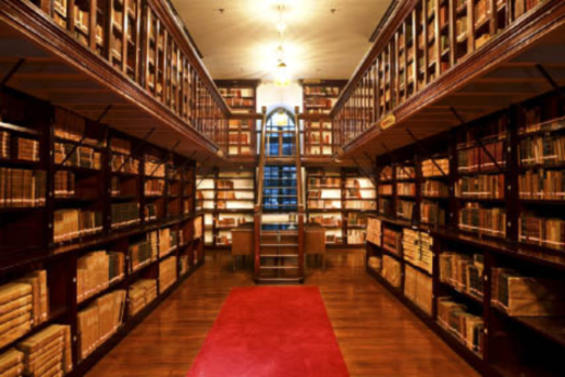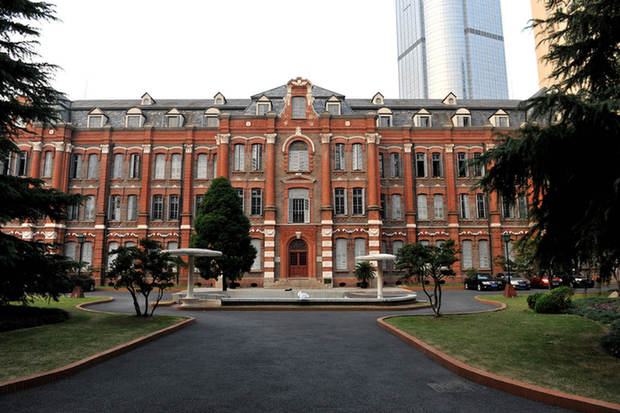The Xujiahui Legacy
|
 |
|
The Xujiahui Library. |
Old Haunt for Bookworms
Housed in an imposing structure, the Xujiahui Library (also known as Bibliotheca Zi-Ka-Wei), built in 1847, is a rich trove of books in different lan-guages. The original wooden floor, wrought-iron railings and arch windows in its reading rooms, all emanate an antique ethos.
The section for European-language publications is a replica of the Vatican Library. This collection proudly includes more than 2,000 books in European languages published earlier than 1800, as well as another 500,000 books published before the end of 1949. The space is apportioned by maroon wood bookshelves towering to the ceiling. Three stairways by the wall lead to the upper floor, leaving the center as an open space that resembles an atrium. Shutters on the European-style pointed-arch windows mute the sunlight, conjuring up an ambience of peace and nostalgia in the interior.
The library’s huge stash of old foreign-languages publications is a legacy of the movement in China to learn from Europe that unfurled in the early 19th century. The fine volumes of Chinese classics translated into other languages also imply that Eastern cultural exports to the West were underway at the same time. The best examples are a 1662 Latin edition of a woodblock print of The Analects, a 1692 French edition of The History of China, and a 1723 edition of Manuscripts: Chinese-Latin Dictionary. There are also many volumes, some illustrated, on Chinese culture and religions, most prominently on the troika of Confucianism, Buddhism and Taoism.
Befitting its name, Xujiahui is a confluence of two civilizations and rivers. For centuries many of the best attainments in world science and technology, arts and culture have blended in this region, to procure innovative application. Now a commercial district and an AAAA scenic area, Xujiahui, though not immune to the changes wrought by time, yet remains intact at its core – a classic facet of old Shanghai.
|
 |
|
Site of the Xuhui Public School. |
